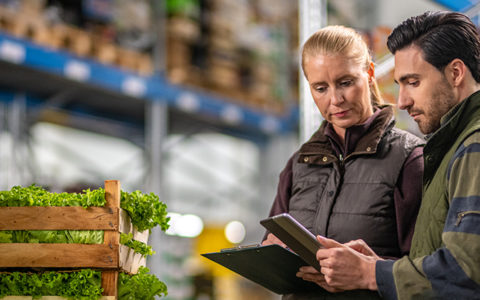7 keys to preparing for the future of real-time tracking

*On June 1, 2023 Emerson’s Climate Technologies business became a new standalone company – Copeland. Though our name has changed, we are building on more than a century of HVACR innovation and industry leadership, and Copeland continues to offer the same products, industry stewardship, and learning opportunities you’ve grown to trust. Information found on this webpage posted before June 1, 2023 may contain our old name or branding, but you can be at ease knowing it was created with the knowledge and expertise of Copeland.
Over the next several years, 2G and 3G cellular networks will become obsolete and potentially impair the ability for real-time trackers to help provide in-transit monitoring of perishable shipments. These legacy cellular networks have provided the technology infrastructure that enabled real-time trackers to deliver live location and temperature data throughout the global perishable cold chain. But as these networks are phased out, end users will need to make the transition to cargo-tracking devices built to utilize next-generation networks.

It’s a complicated landscape, but Emerson will help you navigate this important industry evolution. Here are seven keys you need to know to ensure a smooth transition to next-generation, real-time tracking devices.
1. Why are 2G and 3G cellular networks being phased out? The quickly evolving mobile device industry has outgrown both 2G and 3G networks. As 4G and 5G technologies roll out globally, 2G and 3G networks are becoming obsolete. Specific turndown timelines are dependent on carrier and geographic regions.
2. What does this mean to the cargo tracking industry? Real-time trackers help end users monitor food quality and safety by providing access to location and sensor data such as temperature, humidity and much more. As 2G and 3G networks turn down, cold chain stakeholders will begin to experience gaps in their coverage, which could impair their abilities to help monitor food quality (freshness) and safety in real time.
3. How do you know if you’re impacted? If you are currently using 2G and 3G real-time trackers, you may already be experiencing the impacts of cellular network turndown. Pay attention to your data; be on the lookout for increasing blind spots in your visibility to shipment location/temperature data.
4. What’s taking the place of 2G and 3G networks? Real-time trackers transmit small packets of data that require relatively little memory, battery power and bandwidth. Next-generation, low-power, wide area (LPWA) 5G network technologies — such as Category M (Cat-M) and Narrow band IoT (NB-IoT) — will deliver similar performance characteristics to 2G and 3G while keeping the cost of real-time trackers affordable.
5. When will these new networks roll out? New Cat-M 5G networks are already in the process of rolling out, and major U.S. network providers are allocating infrastructure and technology investments toward these next-generation technologies. While this trend will continue, in some countries and shipping regions, 2G will remain viable well into the future due to its installed base and cost-effectiveness.
6. When will the next generation of real-time tracking devices be available? To minimize gaps in real-time coverage due to the 2G and 3G turndown, we are actively developing the next generation of real-time trackers that utilize multi-network technology and redundancy. These new devices will help eliminate real-time dead zones by providing global coverage for shipments that travel between regions covered by both 2G and emerging networks.
7. How is Emerson helping the industry make this transition? The cellular landscape will be in flux for the next several years, and Emerson is doing everything we can to help prepare the cargo tracking industry for this transition. In addition to developing the next generation of GO real-time 4G/5G tracking devices, we are advising customers about which real-time trackers work best for their shipping routes and working closely with network providers to understand the timing of 2G and 3G turndowns.
Wherever your business ships its perishable cargo, we’ll help you navigate the cellular transition. For additional details on how you can implement these steps, please download our infographic.

8 proven strategies for rigorous cold chain management
by Dan Knauer | Cold Chain
Preparing for the approval and safe use of A2Ls in commercial refrigeration applications...
Protection for high-value shipments just got even better
by Alex Axelsson | Cold Chain, Transportation
We’re excited to announce the release of Copeland’s newest real-time tracker, the GO Real-Time...

Three proven strategies to prevent cargo theft
by Chris Lafferty | Cold Chain, Transportation
The over-the-road (OTR) transport industry is experiencing a surge in cargo thefts. As thieves...
The post 7 Keys to Preparing for the Future of Real-Time Tracking appeared first on Copeland.